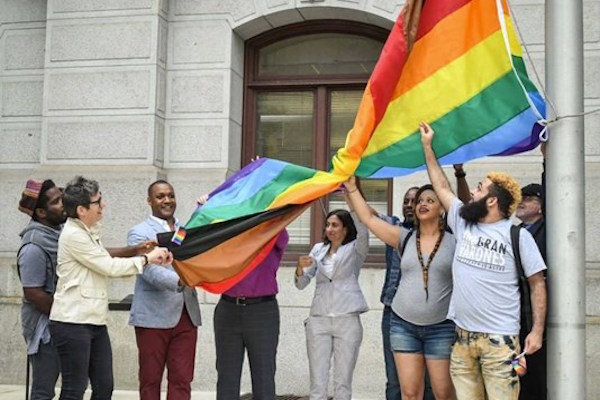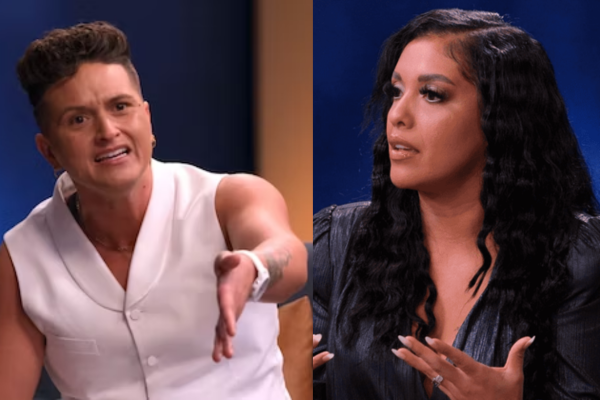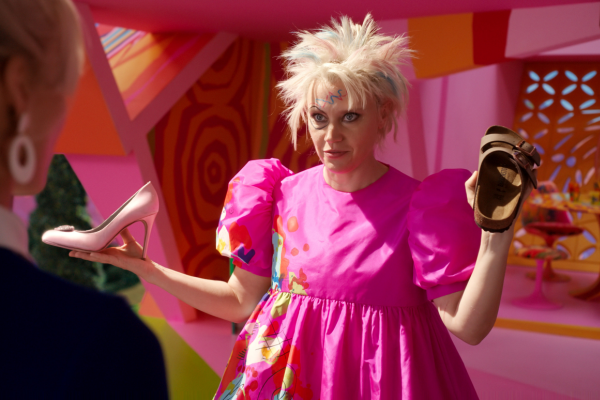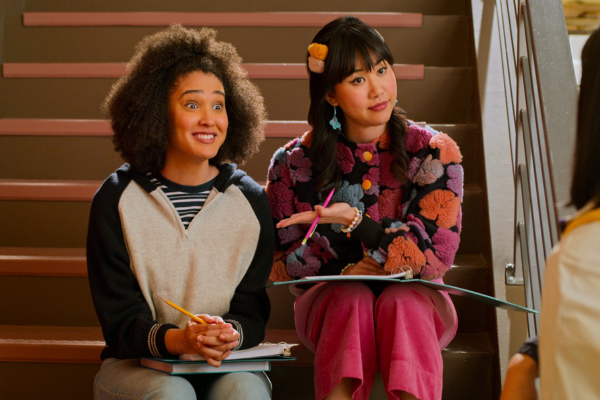
Twitter Responds to Trump’s Transgender Ban
July 26, 2017
Coping with Divided Relationships in Our Divided Country
July 31, 2017In June, you probably celebrated Pride with the rainbow flag symbol. Maybe you carried a flag as you marched in a protest or parade, perhaps you merrily scrolled through Facebook, choosing the pride reaction for every post you saw, or possibly, like me, you painted your nails the colors of the rainbow. However you use it, the flag is the single most recognizable and accessible symbol of the LGBTQ community and the gay rights struggle.
As such, it communicates what we prioritize as a community. The Philadelphia Office of LGBT Affairs felt that the flag could further unite their local community and for the 2017 Pride season, they debuted an eight color flag, adding two stripes: one black stripe and one brown stripe, to the infamous 6 color symbol. The additional colors are meant to recognize LGBTQ people of color in an aim to make a more inclusive community.
The move immediately caught criticism, mostly from white members of the LGBTQ community. Those upset by the Philadelphia’s new flag claim that the six colored flag is a sacred symbol that should not be altered, that the flag already stands for inclusion for all, and that LGBTQ people of color are welcome to make their own flag if they want more representation.
To those who would call it sacred: the Pride flag has been altered numerous times since its creation in 1978 without much criticism or fanfare. Gilbert Baker’s original design included a pink stripe and a turquoise stripe. The pink was eradicated when Baker ran out of pink fabric, the turquoise simply for convenience: during the 1979 San Francisco Pride organizers wanted to split the flag in half and hang it from two flagpoles, so deleting the turquoise allowed for three colors on each pole. We’ve all seen the variations that have become accepted staples at Pride: a U.S. flag with the red and white stripes replaced by the colors of the Pride flag, state flags emblazoned with rainbows, and rainbow flags made entirely of colorful hearts, among others.
As a community, we alter the flag for significant moments in our history. It has been depicted with black stripes at least twice before: once in memory of those lost to the AIDS epidemic and again in 2016 following the massacre at Pulse nightclub as we mourned our fallen brothers and sisters. The rainbow Pride flag is not sacred in design; it is a living symbol, which we alter as the needs and focuses of the community change.
It is clear that this was the intention that led to Philadelphia’s changes of the flag: the racist reality for LGBTQ people of color in their own gayborhood led them to believe that conversation and change were necessary. In fact, in 2016 the Philadelphia Commission on Human Relations investigated discrimination in the gayborhood, and their findings validate the marginalization community members have been reporting for years. Every day, our news feeds are filled with stories of immigrant harassment, Islamaphobic hate crimes, rallies led by racialized hate groups, and notifications of yet another murdered trans woman of color. To believe that these instances of racism are absent from within our community is naïve. To ignore and to discount the experiences our people of color speak of is hypocritical and the epitome of white privilege.
The issues of racial exclusion and discrimination within the LGBTQ community are not exclusive to Philadelphia. Stories abound of people of color facing harassment at the hands of LGBTQ counterparts in even the most diverse cities: NYC, Chicago, and London. Moving to big cities hasn’t provided me or any of my friends of color in the community an immunity to the same racialized marginalization we’ve faced elsewhere. In fact, for many of us, discrimination in more diverse cities can be a bigger issue as it sometimes also comes from other people of color, as multiple groups clamor for the same treatment as their white counterparts. As LGBTQ people of color, we face discrimination in the world at large and again within gayborhoods and designated “safe spaces.”
Philadelphia’s decision to create this new version of the Pride flag makes an explicit statement of support to the racially marginalized members of our community. It says, “We see your struggle and we support you. Here you won’t be subjected to exclusion because of who you are.” While the new flag isn’t going to change these issues overnight, it invites the conversations and actions that lead to long standing change. The rest of the world could take a page from their book.





